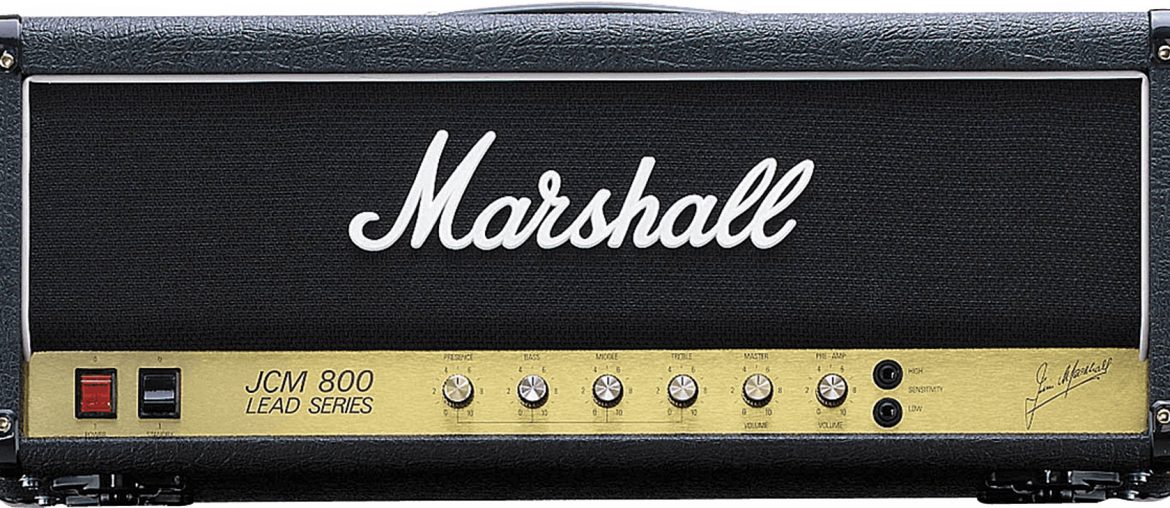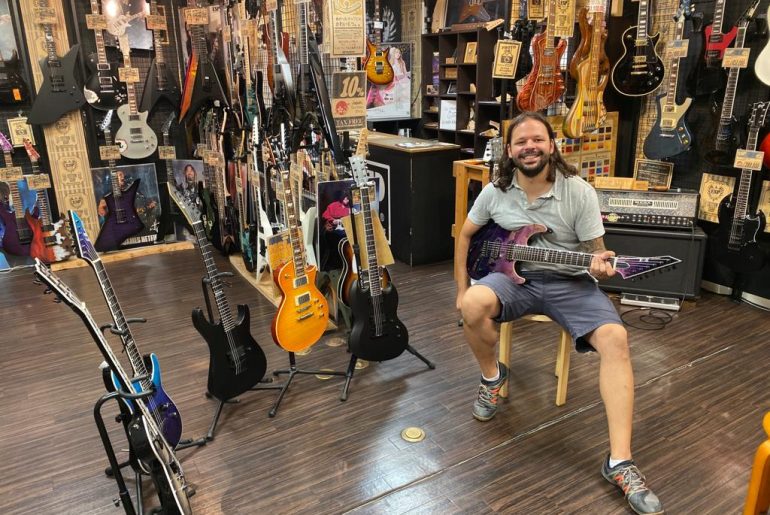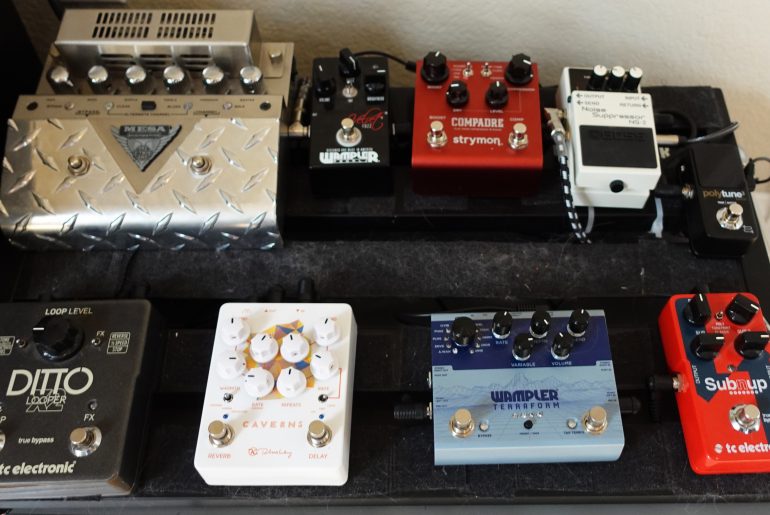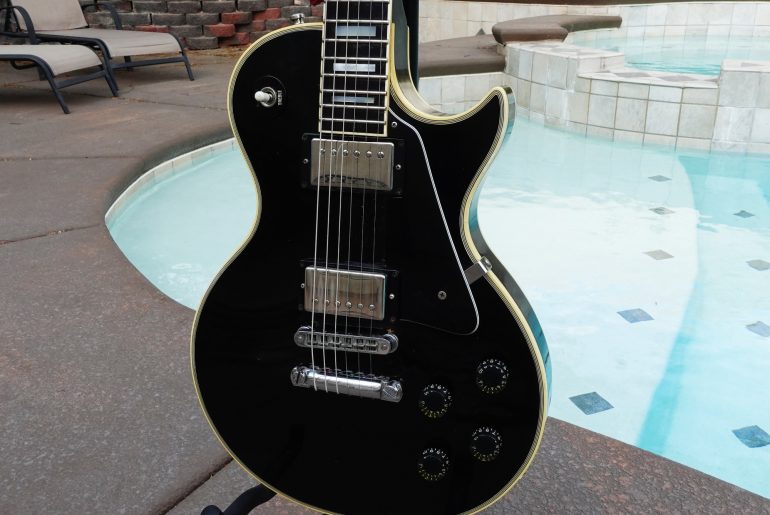I can’t be the only guitar player who sits around thinking about amplifiers I used to own and what horrible decisions I made to get rid of them. Although I’m still the lucky owner of several excellent guitar amplifiers, I can’t help but think about how fun it would be to plug into any of the iconic amps I used to own just one more time. While that may not be an impossible task, it certainly wouldn’t be a practical decision for me to go out and buy them all over again. Instead, I’d like to take a trip down memory lane and discuss the amps of my youth.
Marshall JCM 800 Lead Series
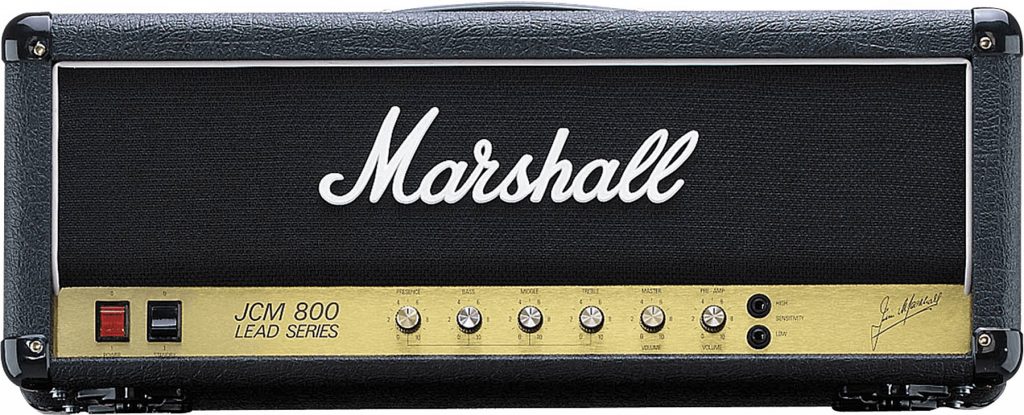
My Marshall JCM 800 story will require a bit of context, so let’s start by jumping back in time to the Fall of 1996. I had turned 16 that Summer and got a job selling shoes at Sears in Southcenter Mall, which is in Tukwila, Wa. Just down the street from Sears was one of my favorite places on earth: American Music. The Southcenter location for American Music is long gone, although their original store, in the Fremont neighborhood of Seattle, is still open to this day.
At that point in my life, I had been playing guitar for about two years, and it was everything to me. While my friends listened to popular artists of the day, I was stuck mainly on Hendrix and Cream. On any given day, I would come home from high school and either go to work at Sears or go to American Music to hang out. There was a guy running the guitar sales department named Leon Christian who became a great friend and musical mentor to me.
Initially, he probably looked at me as just another punk kid in a music store wanting to make noise, but eventually, I think he could see I was there to learn and absorb everything I could related to music and the local Seattle music scene. To me, Leon was the coolest guy around; he was pretty jacked, with long braided hair, and the dude could absolutely shred on guitar. I had never seen anything like him before. He would demo a guitar to a customer at the store, turn it way up, and melt everyone’s faces with impeccable rock technique. I’m sure this help him close the sale on many a guitar, but what was even more impressive about Leon, in my opinion, was to watch him play classical fingerstyle guitar.
His work as a classical guitarist was beautiful, and it was obvious that he had a deep understanding of music. We lost touch a few years later, but more recently, just in the fast couple of years, I ended up running into him at an Aristocrats concert in Seattle. Not surprisingly, Leon was posted directly under Guthrie Govan their entire night. He told me he was still teaching music in Burien, WA, so if you’re looking for a music teacher in that area, I’d highly recommend looking up Leon Christian.
Anyway, back to the ’90s. While my dreams of rock band stardom were just beginning to bud, Leon, about 15 years older than me, was ready to move on with his life and focus on other aspects of music. He knew I was looking for a killer guitar amp and offered to sell me his modded Marshall JCM 800. As he explained, the amp was a one-of-a-kind modded Marshall. It had been featured in music tradeshows and was used by a guy in a local band who opened for Black Sabbath.
I loved the idea of owning an amp that had opened for Sabbath, so he brought it to the store one day for me to check out. He demoed it, and obviously, it sounded amazing because everything he played sounded amazing, so I bought it on the spot, along with a 4×12 Marshall cabinet.
An Iconic Metal Amplifier
If you’re not already familiar with the Marshall JCM 800 Lead Series, it’s easily one of Marshall’s most popular amplifiers of all time and is widely considered to be the epitome of the 1980’s hard rock and metal sound. Although they were discontinued, Marshall ended up bringing them back due to their immense popularity, and still produces them to this day.
It’s a pretty straightforward amp with that glorious British crunch. There’s no effects loop, but a master volume is a significant classification point. Amps without a master volume must be turned up to deafening volume levels to get heavy tube saturation levels in your tone. Amps with a master volume control and a separate pre-amp volume control allow you to saturate the pre-amp with heavy gain while keeping the overall master volume relatively low.
It’s not the same as cranking it all the way because the power amp tubes contribute to the drive saturation, but it’s a practical alternative. Some players love them, while others think they sound artificial, but either way, it was a significant component of this amplifier style. The hard rock and metal players dimed the pre-amp gain, then boosted in on the front end with something like an Ibanez Tube Screamer. The result was the defining sound of hard rock in the 80s.
While I’m able to articulate all of that now, the honest truth is that I knew WAY less about amps (and everything else for that matter) when buying my JCM 800, and even though I kept it for about 7 or 8 years, I never truly learned how to dial it in. I play with JCM 800 simulators on Amplitube now and have more success dialing in tones than I did back when I owned this thing.
I Never Should Have Sold It
Fast-forward to about 2003 or 2004. I played in a band called Collusion and still had the JCM 800, but it wasn’t my main amplifier. I had switched to a Mesa Boogie Triple Rectifier (more on that in a bit), and the Marshall was basically just collecting dust. I should have been messing with it more, but I neglected it. I once accidentally left it on standby for an entire weekend when I went camping with friends, then had to get the tubes replaced.
My girlfriend (at the time) and I had a trip to Las Vegas coming soon, and I struggled to come up with enough spending money for the trip. My way of solving this problem, which is a real palm-to-the-forehead moment for me now, was to take my Marshall JCM 800 to Emerald City Guitars, located in the Pioneer Square neighborhood of Seattle, and sell them my amp for a measly $500.
I worked at a nice restaurant then, so I have no idea why I didn’t just pick up a few extra shifts to come up with the money. I wish I would have because it would be great having my JCM 800 back, but I probably expected to get more and just made a dumb decision by deciding to take that amount.
My reasons for selling the JCM 800 were sound; it wasn’t my main amplifier, it was heavy and very loud, and it didn’t produce the type of heavy gain I was looking for at that time. I was getting the sound I wanted from the Triple Rectifier, and I didn’t know how to get the best sound out of the Marshall, so I foolishly sold it. The weekend in Vegas was fun, but overall, not worth it.
Marshall JCM 2000 DSL
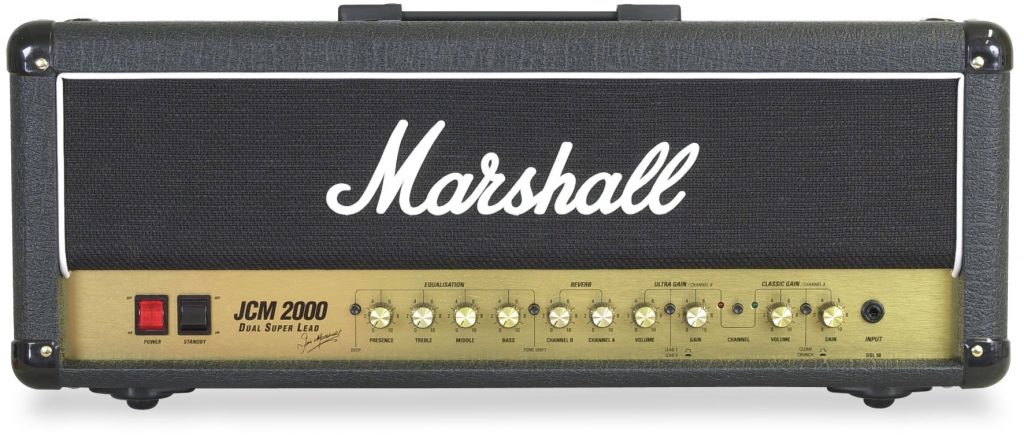
After purchasing the Marshall JCM 800 from Leon, I started bringing it to jam with friends and quickly ran into a problem. It was all set up for a nice gain sound at the time, but I couldn’t get a clean sound out of it. I’m not sure how much I experimented with rolling off my volume in those days, but at the time, I felt like the only way the amp would be usable to me was by setting it clean and using a distortion pedal in front of it. I didn’t like this idea because I wanted a Marshall overdrive sound.
At that time, the hottest new thing from Marshall on the amp market was the JCM 2000 DSL. It was the answer to my problems because it had separate channels for clean and heavy tones. Looking back, I can’t believe how flippant I was in purchasing a brand-new Marshall head. I didn’t even have the money, but I had a job and somehow qualified for financing.
I received the amp quickly but hid the whole thing from my friend Leon. I remember playing around with the new Marshall for a while, but again, my lack of knowledge of dialing in a good tone from an amp was apparent. Eventually, after a week or so, I came clean to Leon. He knew I had made a mistake and hated seeing me take out the debt. Luckily, he knew the GM of the store I had bought the Marshall from, and after a phone call, they agreed to let me return it for a full refund.
Regarding guitar gear, my ownership of the JCM 2000 DSL was shorter than anything else I’ve had. I don’t think they ever took off in popularity and can now be found online for a good deal. It’s a sold amp, but it proved once again that no gear purchase is going to replace practice and great playing.
Fender Twin Reverb
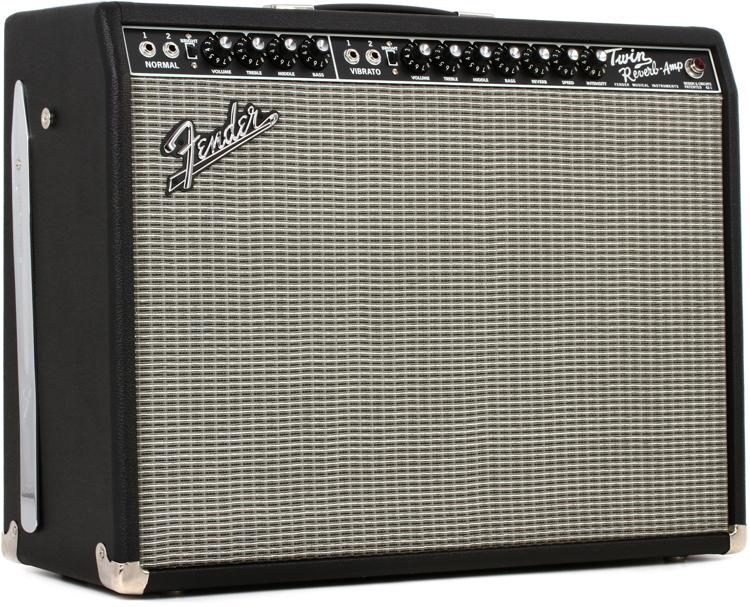
After my buddy Leon helped me settle the whole issue with the Marshall DSL 2000, we started focusing on what made me want another amp in the first place. I explained how I wanted to be able to switch from a nice clean tone to a nice heavy Marshall drive sound, and he said he had a much better solution, which would cost less than half what I paid for the DSL 2000.
He explained that the best clean sound would come from a Fender amplifier, and since I’m looking to pair something with my 100-watt Marshall JCM 800, the perfect fit would be a Fender Twin. As a 2×12 open-back pumping out 80 watts, the Twin is Fender’s largest combo offering, and let me tell you what, that thing is heavy.
I took his advice, buying the Fender Twin along with this really cool analog expression pedal with twine inside, which was used to blend back and forth between two amps. Leon explained this was the same type of setup STP guitarist Dean DeLeo had, and there was no doubt I was getting the best of both worlds in the clean and heavy overdrive departments.
The main problem at this point was the overall size of the rig. I had a Marshall JCM-800 half-stack and a Fender Twin to carry around anytime I wanted to jam. As you might imagine, I didn’t go many places to jam with people in those days, or at least not with my full rig. Luckily, one thing I did figure out about my amps very early on was that the Fender Twin was an excellent platform for effects and distortion pedals.
I now know that this was due to the combination of the Fender Twin preamp eq mixed with a set of 6L6 power tubes, but at that time, all that mattered was that all of my pedals sounded amazing going into that amp. This allowed me sometimes only to take the Fender Twin to jam with people. I wouldn’t get the Marshall overdrive tone, but not having to move that 4×12 cabinet was a relief.
Selling Guitar Gear Online
Sometime in late 1998 or early 1999, I was attending the University of Washington and living in an apartment near campus. I had the Fender Twin and the Marshall JCM 800 besides my bed. These are both extremely loud amplifiers, and it was rare that I got the chance to turn them up.
I had started getting more hip to the whole Internet thing because I had an email account through school. At this point, I still hadn’t made any real regrettable amp decisions because the JCM 2000 was a mistake, to begin with. That all changed, however, when I decided to list my Fender Twin for sale on some shopping site. This was pre-eBay, and I don’t even remember the name of the site I used. It didn’t take long to find a buyer, but then I had to deal with getting it to a shipping facility, then getting it packaged up.
While it would be lovely to still have that amp now that I’m living in my forever home, the reality was that I used to move into a new house or apartment about once a year for almost my entire twenties. The idea of carrying that amp back and forth between states sometimes is not pleasant. Certainly, I could get one now if I really wanted to, but the reality is it’s too loud for me to do anything practical and too heavy to take anywhere. It’s funny because now I would much rather have one of those little 1×10 hand-wired Fender Princeton amps, but back in the day, that wasn’t nearly rock and roll enough.
Mesa Boogie Triple Rectifier
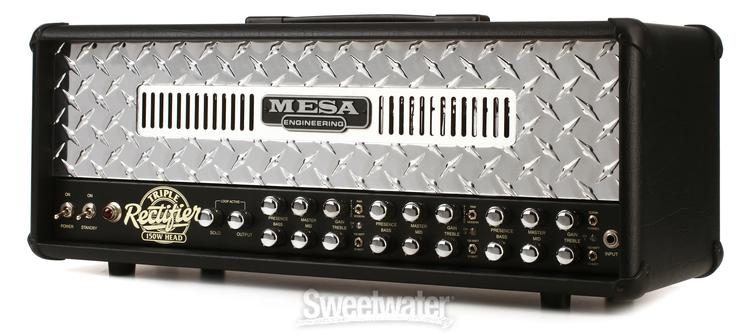
During the early 2000’s I decided to give it a go by forming a band in Seattle. Looking at my main gear setup, I had a 1980 Gibson Les Paul Custom and a modded Marshall JCM 800, but somehow I felt like this wasn’t going to work based on what I was going for. I was really intothe band Chevelle at the time, so I felt like I had to have a Mesa Boogie amplifier paired with a Paul Reed Smith guitar.
I was working a lot at the time and had no problems spending all my money on things I wanted, so I bought a PRS McCarty (which I still have) and a Mesa Boogie Triple Rectifier 150-watt head. I later discovered that Pete Loeffler from Chevelle played a different model of Mesa Boogie amps, but it didn’t matter. After trying it out, I was blown away and had to have it.
Looking back, I think it was a mistake purchasing the Triple Rectifier because, at 150 watts, that thing was brutally loud. I remember our band used to be the loudest one in the rehearsal studio, and it was mostly because of my amp.
It sounded great, and to this day, I swear the Rectifiers from Mesa Boogie are the most underrated clean amps of all time. You look at those things, and the first thing that comes to mind is metal, but underneath all that, diamond plating is one of the most versatile and beautiful-sounding amps ever made. There were three channels, each with its own separate EQ section. Various switches were available on each channel, so the options were vast. I used to have it set up with channel one going pure clean, then a vintage overdrive on channel two, and a modern overdrive on channel three.
The thing sounded absolutely amazing and had more toggles and switches than I knew what to do with, but in the end, the band split up, and I was left sitting there in my apartment with an amp loud enough for a stadium show. Since the band was done, I felt like exploring some new musical directions, so I took the Triple Rectifier half-stack to Guitar Center and traded it in for an Ibanez bass, a Line 6 Spider combo amp, and a few other random little things.
I’m sure they got the better end of the deal, but I couldn’t make a case for keeping the Triple Rectifier and was excited to explore in some new directions. Looking back, I’m not really sad to no longer have this amp for the same reasons I was willing to let it go then. One hundred fifty watts was simply too much power, which heavily impacted the practicality of owning the amp.
Mesa Boogie Dual Rectifier
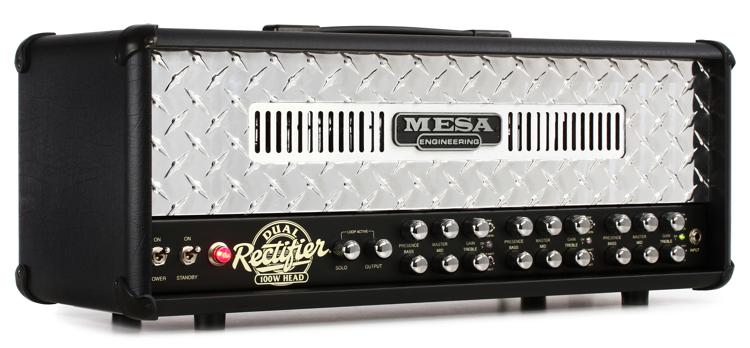
A year or so after our band, Collusion, broke up, we decided to give it another go. We started practicing, and it wasn’t long until we had our first gig. At this point, I was still using the little Line 6 Spider amp I had gotten out of the trade for my old Triple Rectifier. I used that Spider in our first show after reuniting but felt like I needed an amp upgrade if we would be gigging again.
I did some research but ultimately selected a Mesa Boogie Dual Rectifier 100-watt head. It’s basically identical to the Triple Rectifier I used to have, but only 100 watts. I loved the versatility of those three channels and the sounds you could easily get from each one. I still do, to be honest, and would love to have this amp back. At 100 watts, it was a bit more manageable for home use.
The Dual Rectifier was a good purchase and ended up being my main amp until the band was done for good, and then some. It stayed with me when moving from Seattle down to San Diego shortly after getting married. It was with me the entire time we lived in San Diego, but by the time life took us back to Seattle for a job opportunity, it was time for the amp and I to part. I already had one child and another on the way; we were moving ourselves from San Diego to Seattle on our own dime with a pregnant wife, and space was limited.
I ended up listing it on Craigslist and sold it to a kid who played in a Tijuana metal band. I felt that was a cool way to part ways with the amp, and I assume it got a lot more use then. Again, this is one I would love to have back. Mesa is still making the Rectifier series, and modern versions of the Dual Rectifier can be used for desktop recording via a direct out with baked-in speaker cabinet impulse responses. They’re doing a lot of cool stuff these days, so I wouldn’t be surprised to see another Recto getting added to my collection at some point.
Amps I’m Currently Using
These days I rely on the following for my guitar amplification needs. Keep an eye out for demos of each of them on the Pellegrini Guitar YouTube channel.
- Cornford Roadhouse 30 – a 1×12 tube combo handbuilt in England. This one features all class-A construction with a Celestion Vintage 30 speaker.
- Jet City 20 – This 1×12 tube combo is designed by Soldano but built overseas for reduced costs. It’s a workhorse with incredible high-gain stages, and I replaced the stock Eminence speaker with an Eminence Texas Heat.
- Yamaha THR100HD – 100-watt head with two separate digital amps, each of which is highly configurable. I have it paired with the matching 2×12 cabinet.
- Yamaha THR10 – The ultimate little practice amp. I use this thing with headphones, and sometimes even desktop recording, due to the amazing tones it can generate.
- Yamaha THR10C – The classic version of Yamaha’s epic practice amp. I use this one as an audio interface for recording and capturing vintage-style tones.
- IK Multimedia Amplitube – my favorite amplifier modeling software. I use this for practice and recording.
That’s about it for now. I hope you enjoyed the stories, and please feel free to leave comments about your own guitar amps through the years. Thanks for reading, and please subscribe to the Pellegrini Guitar YouTube channel!

